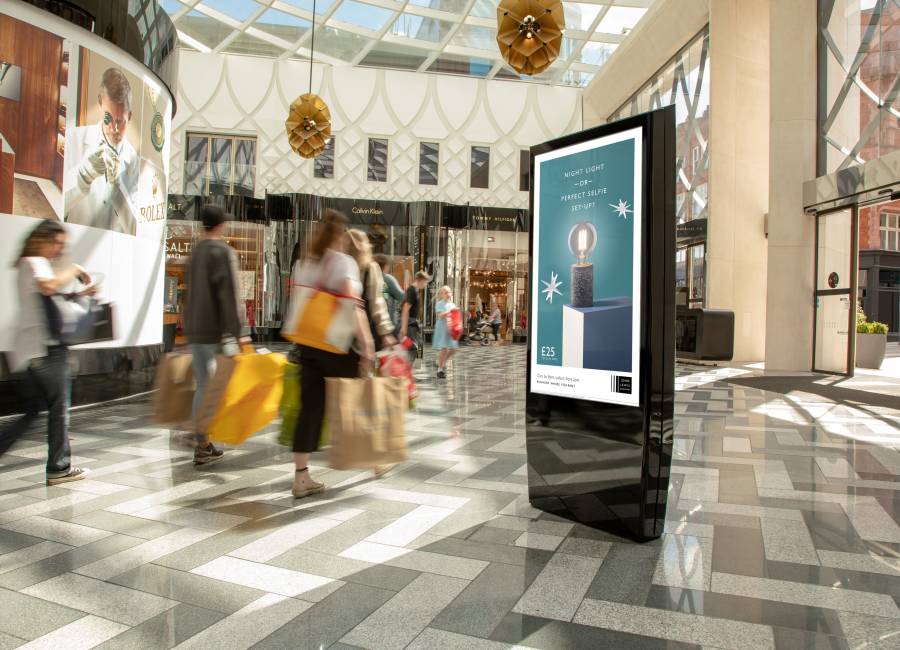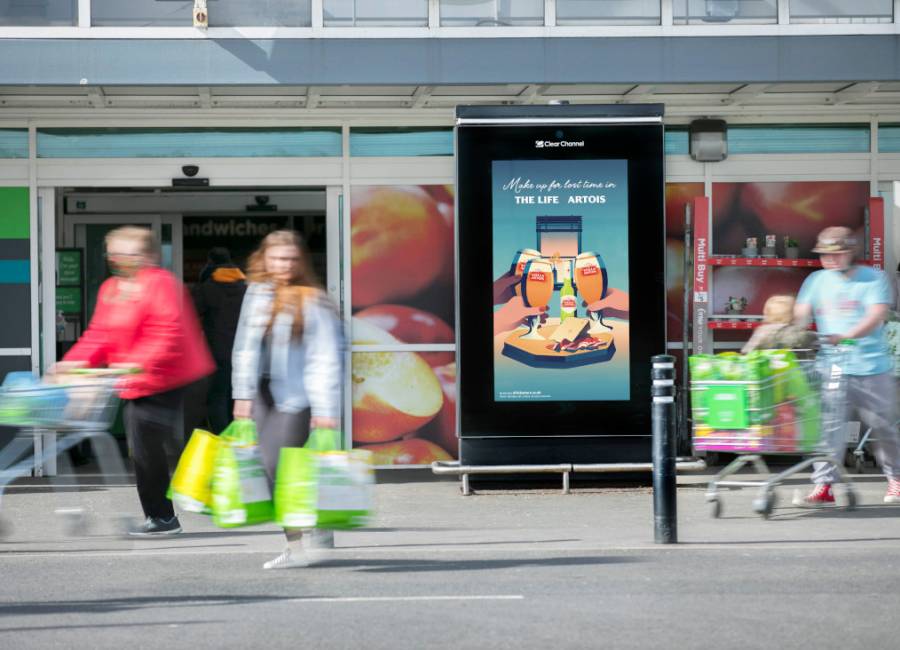There are many things that influence shopping behaviour. Gen Z shopping habits are different to those of millennials, city dwellers shop differently to those in the countryside, and high earners have different shopping priorities to struggling families.
But, outside of demographics, one of the biggest influencing factors is the specific retail environment. In this post, we’ll discuss the different types of shopping behaviour and how they vary between supermarkets, high streets and shopping centres.

What is consumer behaviour?
Consumer behaviour is the term for describing people’s buying and spending habits in regard to consumer goods or services. It involves studying how people choose, buy and use products and services, as well as the factors that influence their decisions.
Through learning about consumer behaviour, businesses can better define and understand their target audience. When analysing the behaviour of those who have already interacted with their brand, the term used is ‘customer behaviour’.
Consumer behaviour is influenced by a variety of things. Economic, social and psychological factors all play a part, as do personal preferences. Effective marketing can have a big influence too, which is why it’s crucial for businesses to understand how consumers behave in different environments.
What is consumer buying behaviour?
Consumer buying behaviour is a subcategory of consumer behaviour. Both look at the psychological processes consumers undertake when buying, but, unlike consumer behaviour, consumer buying behaviour doesn’t also extend to post-purchase activities.
Customer buying behaviour also looks at the psychological processes consumers undertake when buying, but only in relevance to one brand or business.
Types of buying behaviour
While buying behaviour varies on an individual level, there are some clear categorisations that can be made based on how people act when buying different types of products. For example, high-risk purchases like buying a home require a greater degree of consideration than low-risk purchases like buying a magazine.
By looking at the amount of risk, consideration and interest involved in a purchase, shopper behaviour tends to fall into one of four categories.
Habitual buying behaviour
Habitual buying behaviour is displayed when a consumer makes repeated purchases that require little thought or involvement. These purchases tend to be cheap, low-risk items where there are few or no consequences to making the wrong choice.
Routine behaviour like buying a coffee on your way to work every day would be categorised as habitual buying. This type also includes a lot of necessary regular purchases, such as toothpaste or bread.
Example: An office worker buys the same sandwich from the same shop for lunch every day.
Variety-seeking buying behaviour
Variety-seeking buying behaviour is characterised by low consumer involvement, even though there are lots of options on offer. With this type of behaviour, decisions are made quickly and based on a desire for variety, rather than a rigid set of criteria.
Variety-seeking shoppers will continually buy from different brands – not because anything is wrong with the previous brand, but because they simply want to try something new. As with habitual buying behaviour, there is very little risk in making the ‘wrong’ choice.
Example: A professional woman shops at lots of different clothing stores, consistently trying out new styles and trends.
Complex buying behaviour
High-involvement purchases that require lots of consideration usually fall into the complex buying behaviour category. Purchases like this are often unfamiliar to the consumer or very expensive, so making the wrong choice carries risk.
This type of buying behaviour is referred to as complex because of the weight of the decision and the number of different factors that influence it. Consumers will do their research, pay a lot of attention to the differences between brands, and might even consult family and friends.
Example: A young couple buys a new car that must meet the needs of their growing family.
Dissonance-reducing buying behaviour
Dissonance-reducing buying behaviour is similar to complex in that it usually involves infrequent or expensive purchases. However, they differ in that dissonance-reducing behaviour occurs when there is little choice or variation between products.
When the products themselves are too similar to differentiate based on features, consumers are forced to choose based on ease, price or availability. Post-purchase, they remain unconvinced that they have made the right choice and might display anxiety-reducing behaviours such as continuing to read reviews or relying on the brand’s image to reassure themselves.
Example: A driver buys car insurance based on the cheapest premium price.
How retail environment influences shopper behaviour
Shopper behaviour is heavily influenced by the specific retail environment. People shopping online do not behave in the same way as those scouring the rails at a shopping centre, who, similarly, do not behave the same as those in a supermarket.
Of course, some buying journeys also play out across multiple retail environments. For instance, consumers might carry out research about a product online before heading to a physical shop to try it out before buying it.
Here’s an overview of how retail environments and the marketing tactics deployed within them can influence shopper behaviour.
Online
Online shopping allows consumers to spread their decision-making over multiple days. Because of this, people shopping online often show complex or dissonance-reducing buying behaviour. This behaviour is usually research-led, with reviews and information being easy to find.
Personalised recommendations, one-click purchases and ease of browsing all drive impulse buys. However, high return rates (30% compared to 9% brick-and-mortar) negate a lot of these purchases and delays in returns processing can lead to inefficiencies in business analytics, making it difficult to effectively analyse behaviour.
High streets
High streets provide both convenience and immediacy for shoppers. People are more likely to visit for smaller trips, whether it be popping to the post office, picking up something from the pharmacy or meeting a friend for coffee. These routine activities mean that habitual buying behaviour is a common occurrence on high streets.
With the role that high streets play in everyday life, consumers are more likely to be influenced by contextual advertising that speaks to the current moment. However, high streets are increasingly becoming a hub for boutique stores and independents, which means there’s also an opportunity for smaller brands to influence variety-seeking shoppers with high street advertising.
Shopping centres
Shopping centres have multiple occupants and a diverse range of goods on offer, which makes variety-seeking behaviour common in this environment. Complex buying behaviour is also often displayed, with consumers willing to search many shops to find very specific items.
Shopping centres are increasingly being transformed into multi-purpose destinations, encompassing leisure and entertainment alongside retail. They’re also where people tend to go to search for gifts. When advertising in shopping centres, brands should therefore bear in mind that consumers might respond more to lifestyle-focused creatives than utilitarian ones.
Supermarkets
The primary function of supermarkets is to cater to consumers’ everyday needs, making habitual 3buying behaviour prevalent. Not only do supermarket shoppers often have an established routine, but they’re also regularly in a rush and will therefore make purchases based on familiarity.
Strategic supermarket advertising can sway habitual buyers away from their regular brands, especially when price-led. It can also be used to attract variety-seeking shoppers who are on the hunt for non-essential items like snacks and sweets.

Using Out of Home to influence shopper behaviour
There are lots of different things that affect consumer shopping habits. Some of these are outside of brands’ control, like the individual’s financial situation or personal interests and preferences. But there are also lots of things that brands can do to influence buying behaviour.
Out of Home (OOH) advertising is great for this purpose because of its proximity to the point of sale. OOH placements in supermarkets, high streets and shopping centres offer brands a strategic advantage, elevating visibility at the pivotal moment so that they remain front of mind as consumers make their purchasing decisions.
By analysing consumer behaviour, brands can gain a better understanding of where and when to advertise for maximum impact. And by looking at their own customer behaviour, brands can gain valuable insights into the most effective messaging strategies.
Here are some of our top tips for influencing shopper behaviour with OOH advertising:
Focus on offers and promotions in ad copy, especially when trying to influence habitual buyers.
Capture attention in busy environments by creating visual impact with bold colours and compelling imagery.
Use personalisation to foster a deeper connection that increases engagement.
Master omnichannel retail advertising to ensure brand prominence across different environments.
To find out what your campaign could look like, take a look through some of our favourite retail advertising examples and please get in touch if you have any questions.
It’s as easy as that!
Looking to discuss Out of Home advertising in your local area? Please give us a call or fill in our form and we will get back to you shortly.



